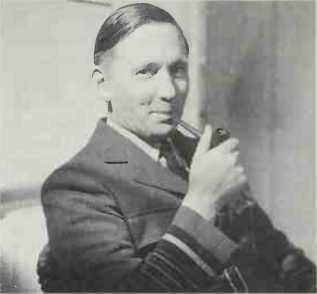Badly shaken the Japanese and destroyed their communications systems: Shibasaki could not
Launch a night counterattack that might have overwhelmed the beachhead. After 76 hours of savage close-quarter fighting, the Marines secured Betio on November 23, at a cost of just over 1,000 dead and 2,070 wounded; only 17 Japanese troops and 129 Koreans survived.
Meanwhile, some 105 miles (169km) to the north, the Japanese garrison on Makin - 400 naval troops (Lt Seizo Ishikawa) and 400 Koreans — fiercely opposed 165th Infantry Regimental Combat Team’s invasion early on November 20. When Makin was secured, November 23, only one Japanese and 104 Koreans survived. US losses were 66 killed and 152 wounded - plus 644 naval personnel lost in the escort carrier Lis-combe Bay, sunk off Makin by Japanese submarine 1-175 on November 24. RO’N.
Task force. American naval term for any group of ships assembled for a particular operation or purpose. Now more generally adopted.
Task Force 77. Carrier strike force of US Seventh Fleet that entered the Vietnam War during the Tonkin Gulf Incident, 1964. The Task Force initiated the 37-month bombing of North Vietnam in February 1965 and flew close-support missions over South Vietnam from April 1965. Carriers operating from “Yankee Station” in the Gulf of Tonkin flew “Rolling Thunder” missions against the North, while those at “Dixie Station” about 105 miles (170km) southeast of Cam Ranh Bay provided air support in the South.
Tassafaronga, Battle of (November 30-December 1 1942). Alerted by “Magic”, US Task Force 67 (Rear Adm Carleton H Wright: four heavy cruisers; one light cruiser; six destroyers) intercepted Tanaka’s “Tokyo Express” of eight destroyers (carrying supplies for Tassafaronga, northwest Guadalcanal), in Ironbottom Sound at c2300 hours on December 1 1942. Failing to exploit the tracking of the Japanese approach by his surface radar, Wright allowed Tanaka’s force to pass, delaying his own destroyers’ attack until the Japanese warships were beyond effective US torpedo range. Alerted when the US cruisers opened fire, Tanaka detached four destroyers to drop supply containers off Tassafaronga and, although losing Takanami to US gunfire, counterattacked with Long Lance torpedoes, sinking heavy cruiser uss Northampton and so badly damaging heavy cruisers New Orleans, Pensacola and Minneapolis that they were out of action until late 1943. RO’N.
Taylor, Gen Maxwell (1901-87). US. A soldier with high academic qualifications, Taylor’s career before World War II included service in Japan, China, South America and study at various US military establishments. In 1942 he was appointed Chief of Staff and artillery commander of the 82nd Airborne Division and took part in the campaigns in Sicily and Italy. Such was Taylor’s aptitude that he was chosen to carry out a secret mission to Rome to try and negotiate arrangements for a seizure of the city by Allied airborne forces coincident with Italy’s surrender. He subsequently commanded the 101st Airborne Division, leading it with distinction in Normandy, Operation “Market Garden” and the advance into Germany. His postwar career was equally varied. After a period as Superintendent of West Point, he commanded the US Eighth Army during the Korean War and served both as US Army Chief of Staff (1955-59) and Chairman of the Joint Chiefs of Staff (1962-64). A “political” general, Taylor had close associations with the White House and clashed with President Eisenhower over military policy. He developed a more harmonious relationship with President Kennedy, acting as his personal military adviser and, in 1961, was sent to report on the deteriorating situation in Vietnam. Taylor was influential in Kennedy’s decision to increase the American commitment and continued as a military adviser to President Johnson. After a return to Saigon in 1964 as US Ambassador, Taylor was recalled to Washington in 1965 to serve as Chairman of the President’s Foreign Intelligence Advisory Board. MS.
Tchepone (Sepone). Town located on Route 9 in the mountains of southern Laos. In 1961 Vietnamese communist forces helped the Pathet Lao carve out a liberated zone in the area in order to obtain unimpeded use of the Laotian panhandle for the Ho Chi Minh Trail. Because of its importance to North Vietnam’s logistical effort, Tchepone was the objective of Operation “Lam Son 719” launched by the Army of the Republic (arvn) in 1971.

Tedder: deputy for “Overlord”
Tedder, Marshal of the RAF Lord (1890-1967). Br. Air Commander in the Middle East and Mediterranean 1941—43, Deputy Supreme Commander (to Eisenhower) 1943-45. Regarded as one of the best brains in the raf. In high command he showed outstanding qualities including a remarkable understanding of the American point of view and an instinctive ability to draw upon intellectual advice, notably from Professor Zuckerman. His experience on the Middle East and the Mediterranean theatre, where the principal uses of air power were to assist the conduct of Allied military operations, made him an admirable choice as Eisenhower’s deputy for the invasion of Europe. The decisively important contribution of Anglo-American air power to the preparation and execution of “Overlord” was substantially due to Tedder’s success in harnessing it to Eisenhower’s purposes. Tedder developed a “common denominator” theory of air power which suggested that it should be employed on purposes which would benefit every aspect of the immediate general strategy.




 World History
World History









